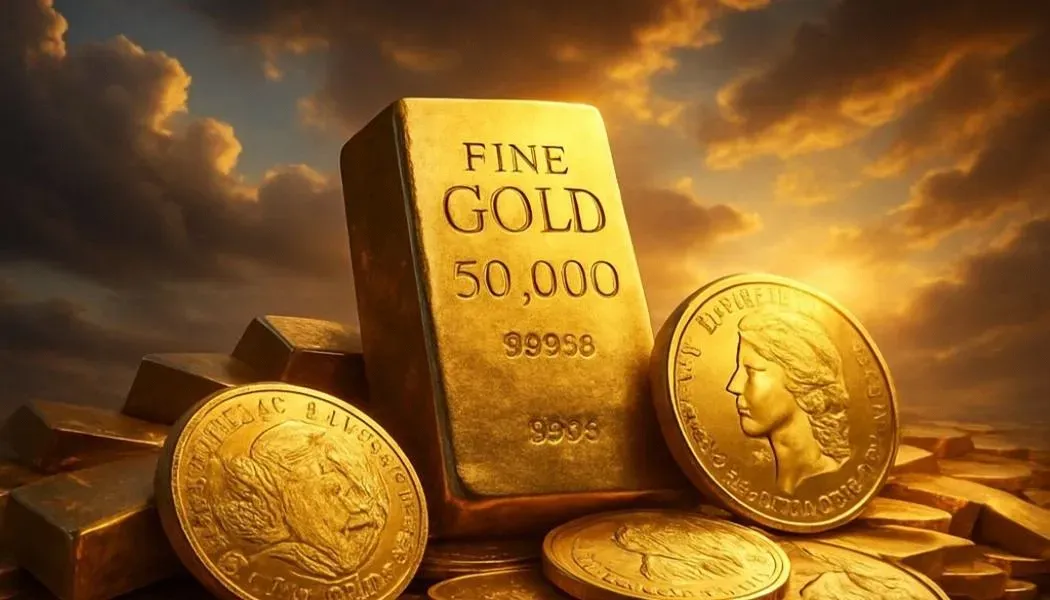
2025: A Milestone Year for Gold
The year 2025 has already marked a turning point in precious metals. Gold prices have broken through $3,600 per ounce, setting new all-time highs and reinforcing its reputation as the ultimate safe-haven asset during uncertainty. For investors, this rally confirms gold’s resilience—but the provocative question remains: could gold ever climb as high as $50,000 per ounce?
Key Drivers Behind Gold’s 2025 Surge
Several fundamental forces are supporting gold’s ascent:
- Federal Reserve Policy: Markets anticipate further rate cuts, keeping real yields under pressure.
- Inflation Concerns: Even as inflation moderates, persistent price pressures keep demand for gold steady.
- Dollar Weakness: A softer U.S. dollar continues to boost global buying power.
- Geopolitical Risks: Ongoing conflicts and trade disputes fuel safe-haven flows.
These drivers explain gold’s climb past $3,600. But the leap to $50,000 per ounce would require an entirely different financial paradigm.
Could $50,000 Gold Become Reality?
To fully back the U.S. money supply with gold, analysts estimate the metal would need to be revalued between $50,000 and $60,000 per ounce. At a global scale, with worldwide money supply topping $100 trillion, the price could theoretically be even higher.
This scenario isn’t based on market trends alone but would require a systemic revaluation—in effect, the reintroduction of a gold standard or a fundamental reshaping of the monetary system.
History Shows Extreme Shifts Are Possible
Gold has undergone dramatic resets before:
- 1933 Roosevelt Revaluation: President Franklin D. Roosevelt raised the official gold price from $20.67 to $35, an overnight increase of nearly 70%.
- 1971 Nixon Shock: By ending the dollar’s convertibility to gold, President Nixon unleashed a free market in which gold prices multiplied more than 20 times in a single decade.
These moments illustrate that when confidence in money collapses, governments are willing to radically reprice gold.
What Would It Take to See $50,000 Gold?
Reaching such a level would demand an extraordinary alignment of circumstances, likely including:
- Return to the Gold Standard: A global decision to anchor currencies to gold.
- Currency Breakdown: A crisis of faith in fiat money, pushing citizens and governments toward tangible assets.
- Debt or Inflation Shock: Hyperinflation or debt crises forcing a systemic reset.
- Global Cooperation: Coordinated action among the world’s largest economies—an unprecedented challenge.
Without these conditions, $50,000 gold remains merely a thought experiment, not a near-term forecast.
Central Bank Demand: A Telling Sign
Central banks have been steady net buyers of gold for more than a decade. In both 2022 and 2023, their purchases reached levels not seen in decades. Should central banks decide to formally revalue their reserves, it could trigger a chain reaction that makes $50,000 gold more plausible.
Investor Strategies in a High-Gold World
- Physical Bullion: Coins and bars would deliver the strongest gains.
- Numismatics: Rare coins could earn even greater premiums as both collectibles and bullion.
- Silver as a Complement: Silver often acts as the “affordable alternative” to gold and could rally sharply.
- ETFs vs. Physical: ETFs may track price appreciation, but direct possession of bullion ensures ownership in a systemic reset.
- Diversification Still Matters: Even in a revaluation, risk management through diversified portfolios would be essential.
Technical Outlook: Near-Term vs. Long-Term
In the short run, gold faces resistance around $3,600–$3,650 and support near $3,500. A break higher could open room toward $3,700–$3,750. Long term, however, speculation about $50,000 gold underscores the stark contrast between current chart dynamics and potential systemic shifts.
Would a Gold Standard Return?
The Bretton Woods system ended in 1971, but debate over a return persists. Supporters argue it would restore fiscal discipline, while critics note that the scale of today’s global economy dwarfs available gold reserves. Achieving full convertibility would require massive revaluation, making such a move politically and logistically complex.
Gold as the Ultimate Stress Test
Although $50,000 gold remains highly unlikely under current conditions, the scenario highlights vulnerabilities in fiat currencies. History shows that when monetary trust breaks down, gold often steps in as the anchor of value.
For modern investors, the key takeaway is timeless: whether trading at $3,600 or at hypothetical multiples higher, gold remains the foundation of wealth preservation and the ultimate hedge against uncertainty.
Another article that may interest you:
The Fascinating Story of the $500 Bill: History, Value & Legacy

